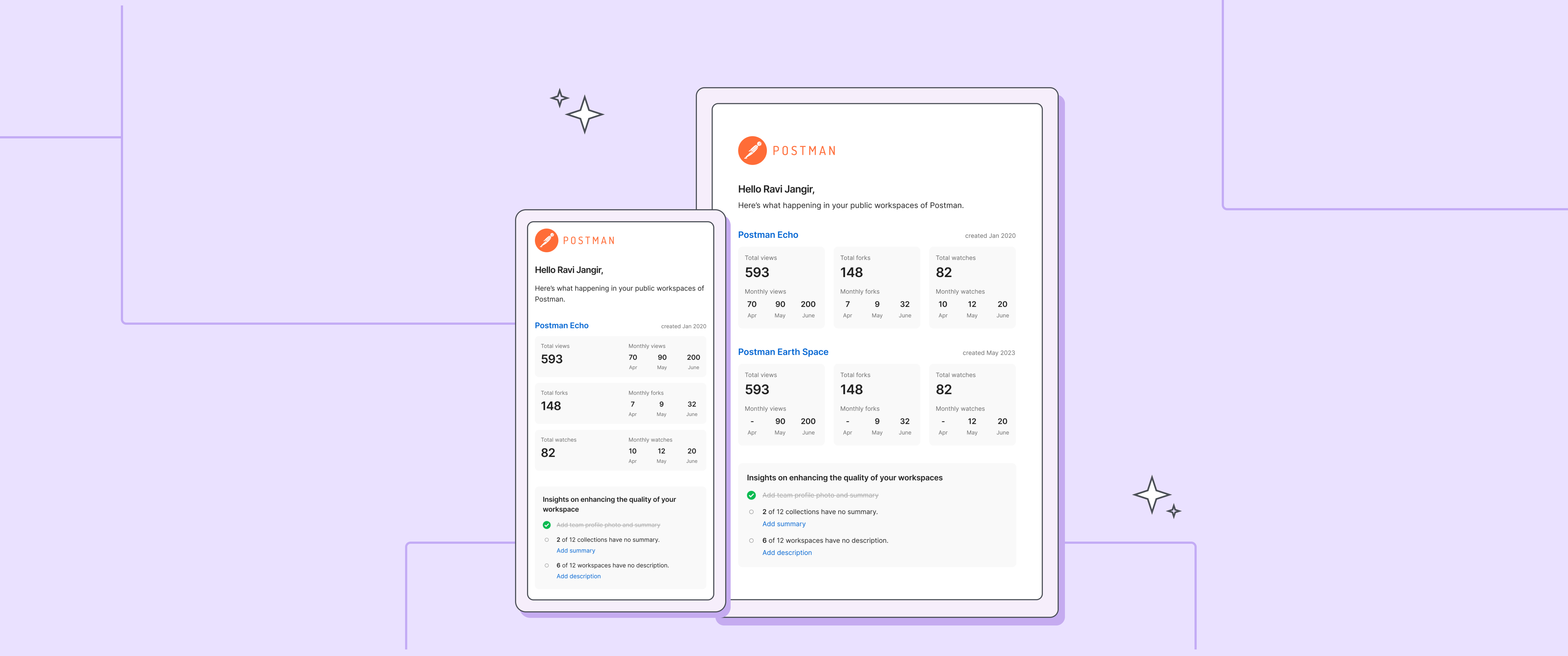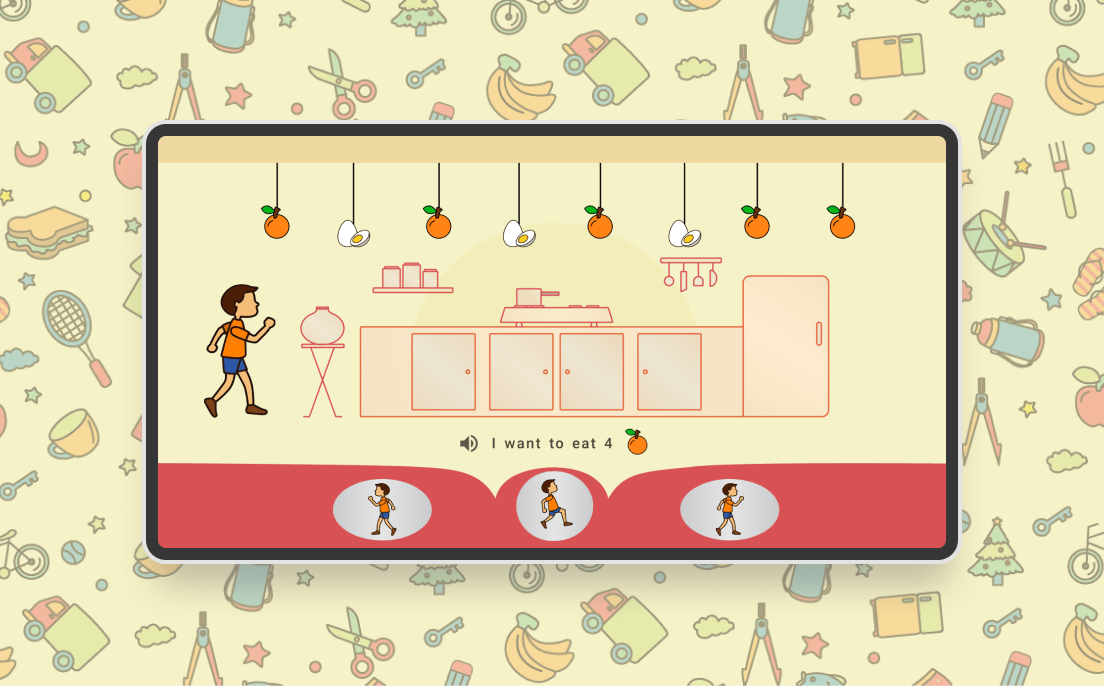Background
At Postman, I primarily served as a Product Designer, but I also took on User Research responsibilities at key stages of this project. My objective was to design a new feature that would help API producers monitor the performance of their APIs and take action to improve them. In this case study, I’ll highlight how my user research efforts played a critical role in shaping the product direction and ultimately contributed to the project’s success.
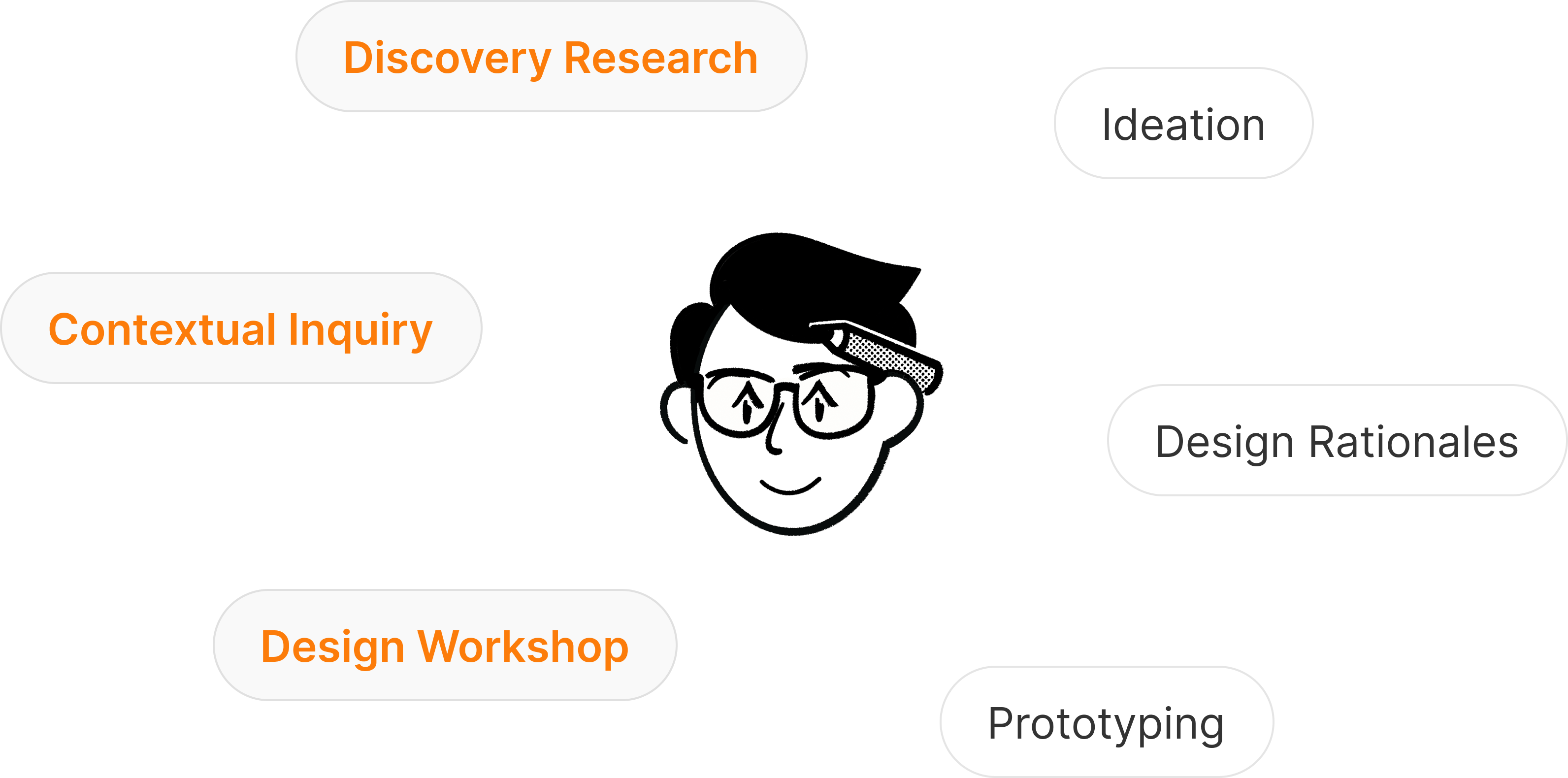
Problem
The initial problem statement provided by the PM was vague and open-ended:

To uncover the real problem behind this fuzzy statement, I switched into research mode—asking a series of “Why?” and “So what?” questions to get to the root of the issue and develop empathy for the users' pain points.
Preliminary Questions
To guide my exploration, I started with two foundational questions:

These questions helped me break down the assumptions baked into the original brief and surface new areas of investigation.
1:1 with Key Stakeholders
To answer these questions, I conducted a series of 1:1 interviews with key stakeholders, including Product Managers, Product Head and Design Manager. These conversations helped me differentiate between what we already knew and what we still needed to learn. They also clarified internal expectations and aligned the team around shared research goals before engaging with users.
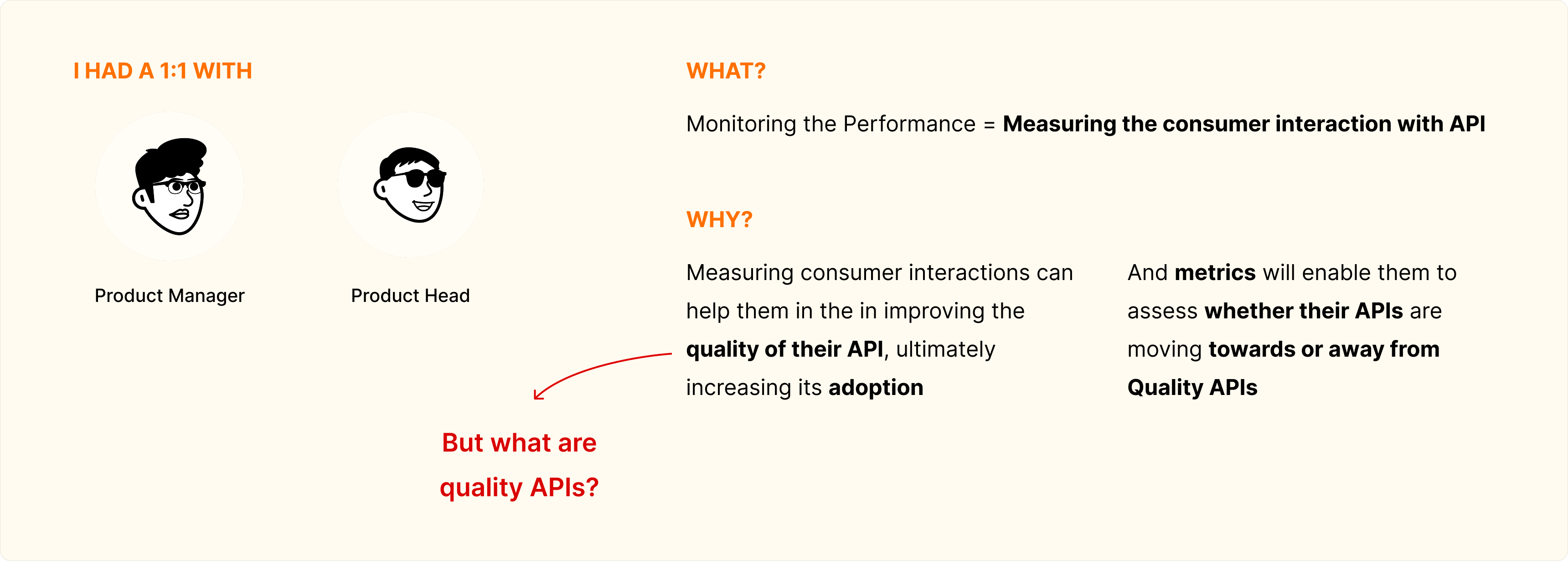
Analyzing current design
To better understand the issues in the current design, I analyzed recorded producer calls, developer relations, and data from social forums such as Reddit, Twitter, and Medium.
I conducted rapid affinity mapping on the collected data to identify key problems in the current system:

Research Questions
After conducting preliminary research, I developed the following research questions to guide me toward solving the problem:
What are quality APIs?
Every producer wants to build a quality API, but quality is a very ambiguous and subjective term.
What are relevant metrics for producers?
Producers need metrics to see whether their APIs are moving towards or away from Quality APIs.
How can we assist producers in building quality APIs?
Producers need our assistance in making relevant improvements in their APIs.
Methodology
Defining quality APIs
Understanding consumers' interactions with APIs will help me uncover their pain points. Addressing these pain points from the consumers' perspective will allow me to define quality APIs, answering the first research question.
I conducted contextual inquiries with six consumers to observe how they search for the right API for their use case. This approach helped me identify their key challenges and pain points throughout the process.
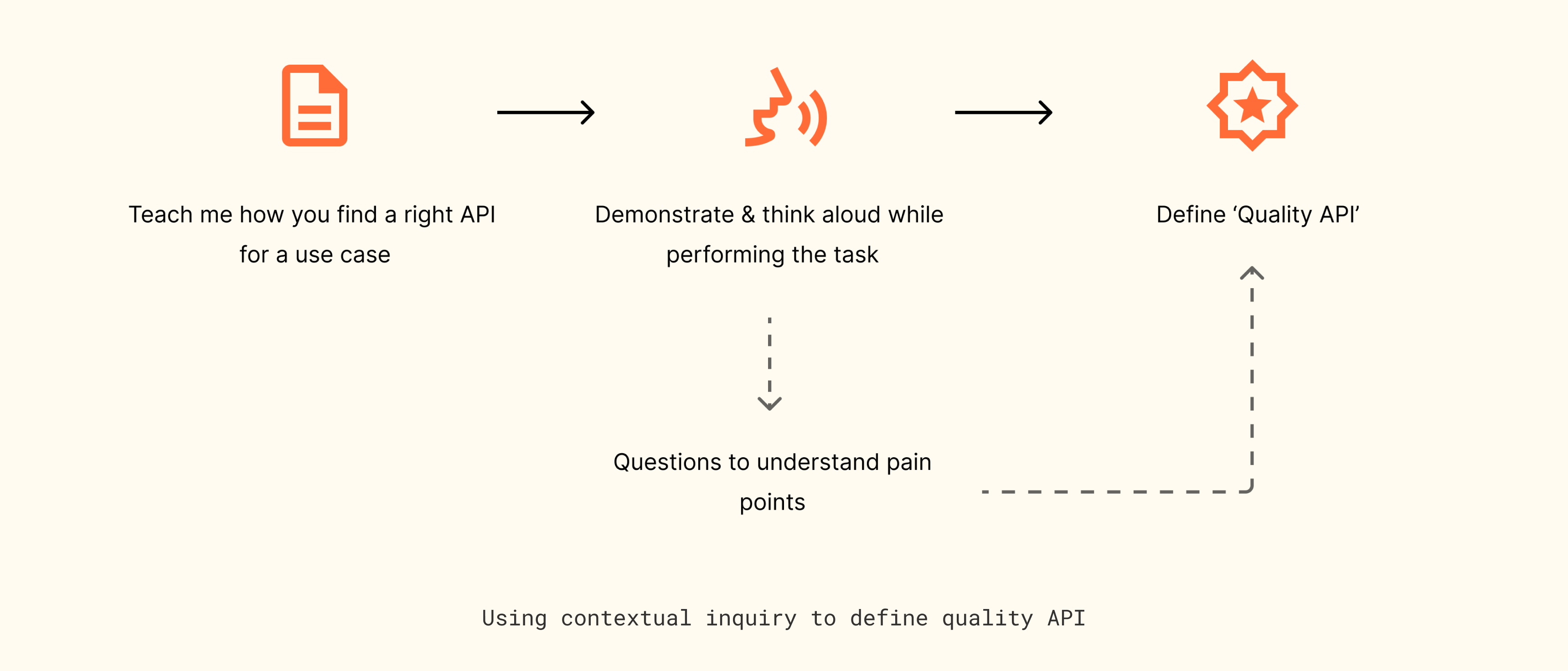
I decided to present my findings in the form of consumer journey with stages, actions & pain points
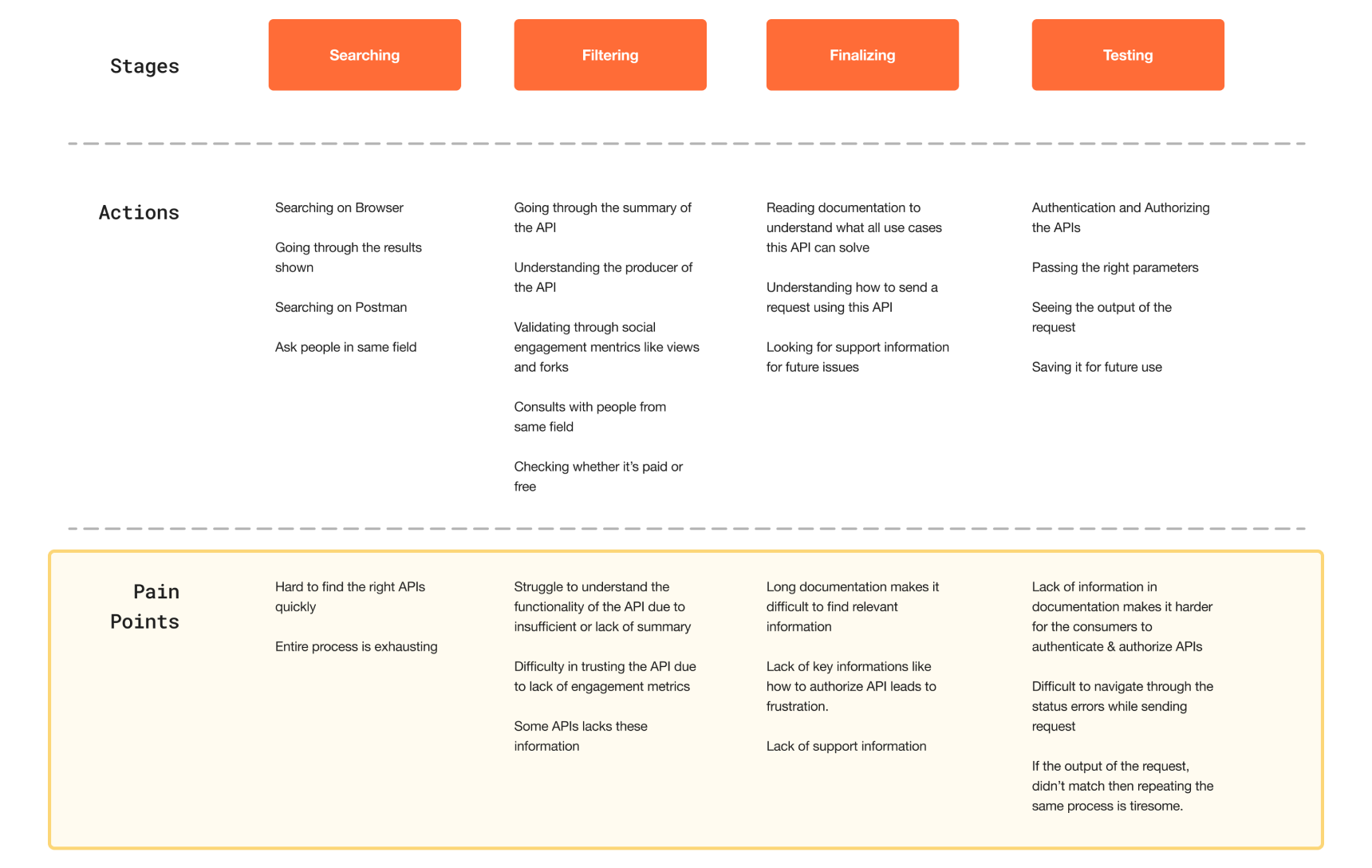

Identifying relevant metrics
Customer interaction analysis and collaboration with team members helped me propose relevant metrics for mapping, which will address the second question.
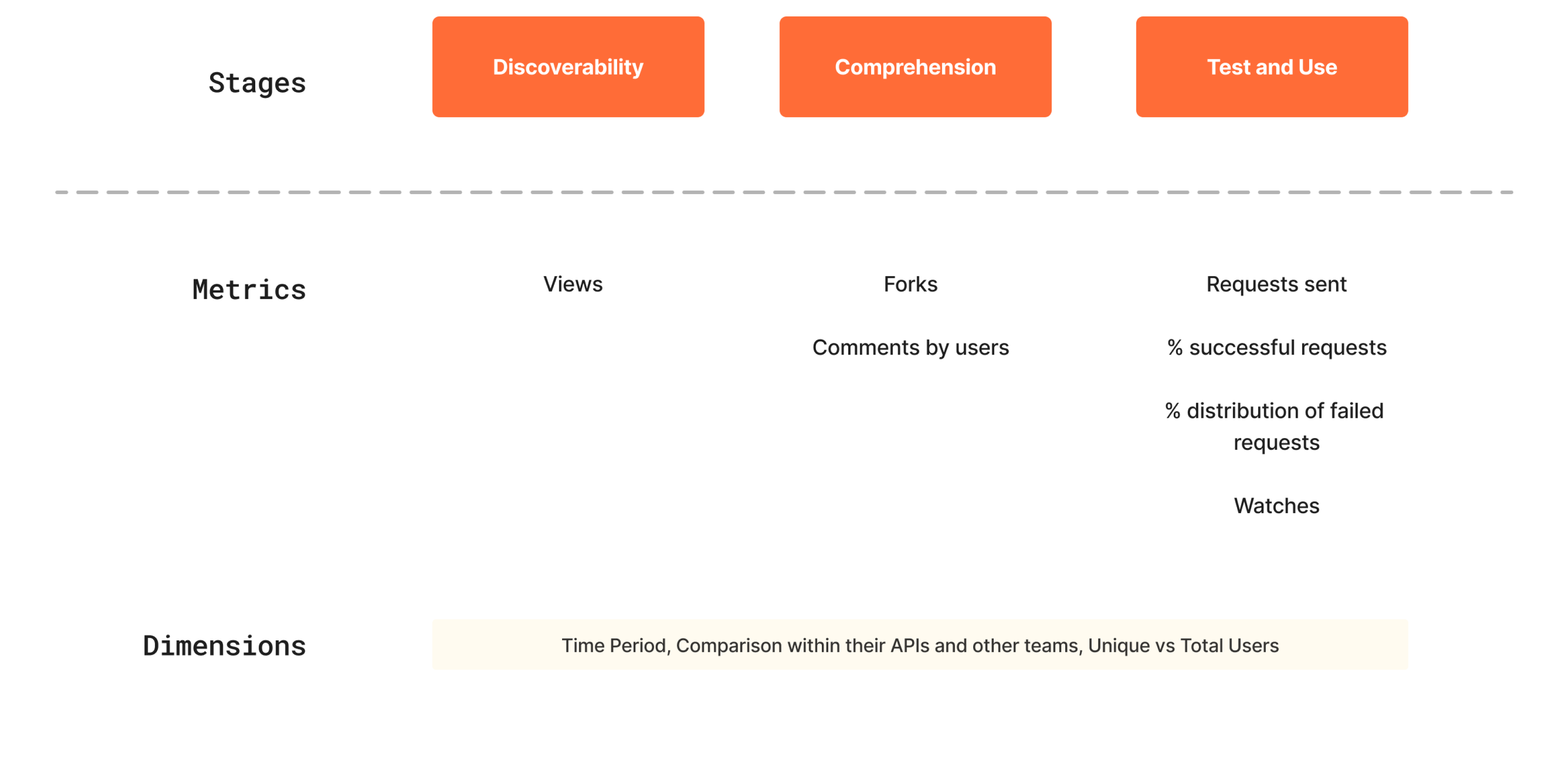
Suggestions for producers to improve APIs
I also conducted a feature mapping exercise within Postman, using insights from customer analysis to propose actionable suggestions for API producers, which will help answer the third research question.
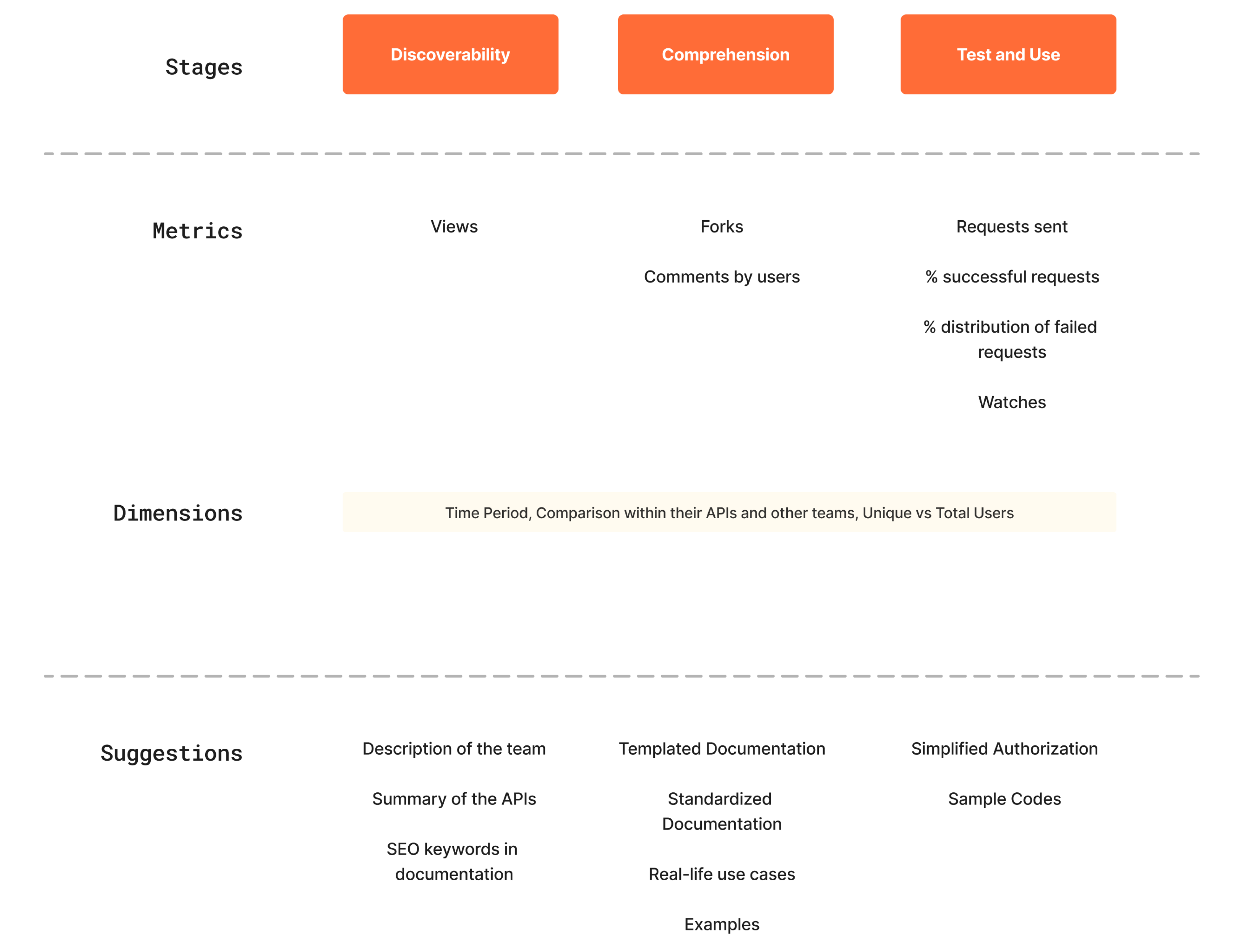
Design Workshop
I facilitated a workshop with my Design Manager, Senior Product Designer, Product Managers, and Developers to prioritize the key metrics for our first launch. Together, we identified which metrics to focus on initially and which to save for the next phase.
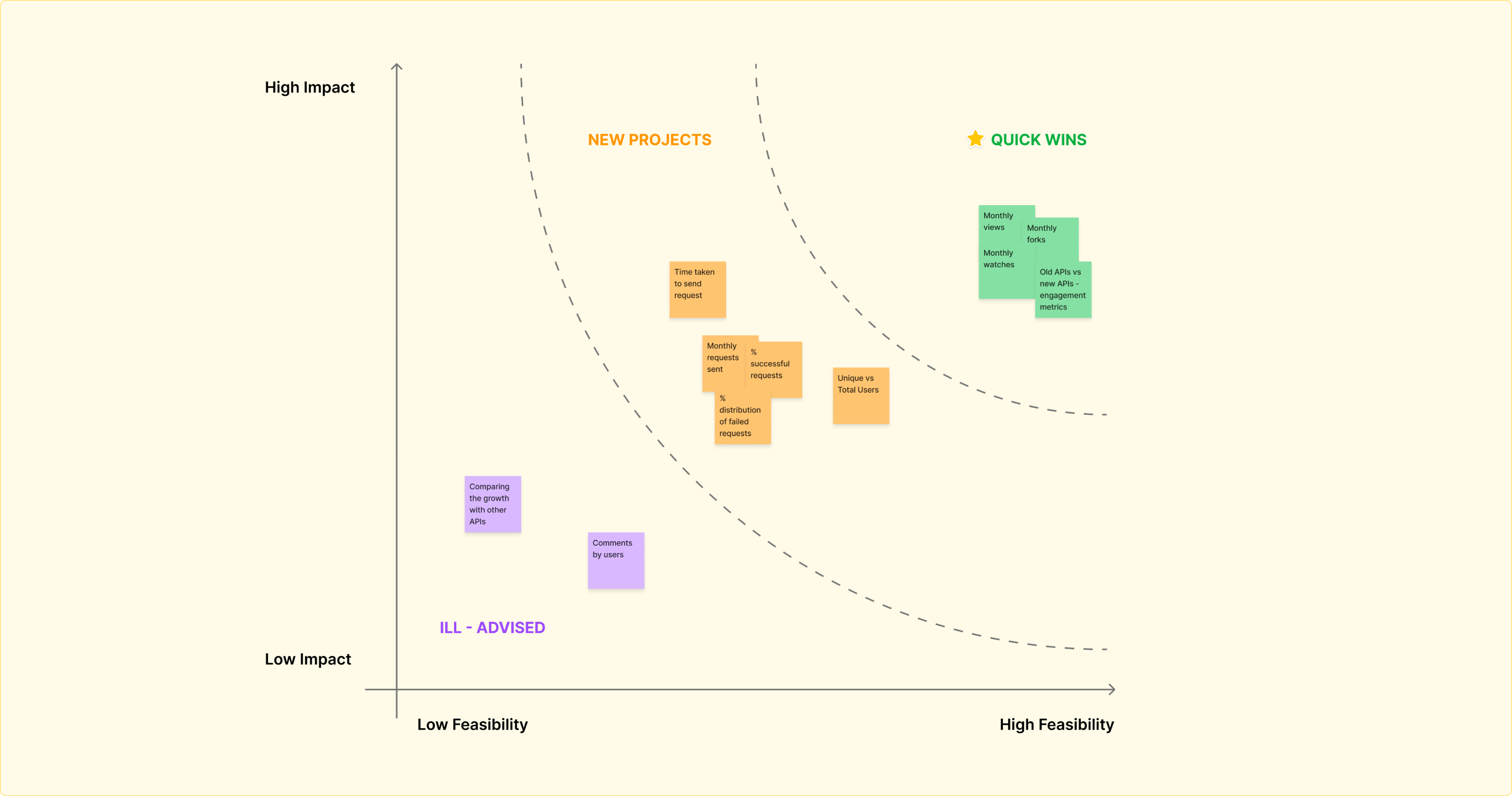
Design Opportunities
So, after rationally comparing the 2 ideas as shown above, we decided to go with idea-2. I created the high-fidelity design. I also created the mobile design of the emails.
Visualizing interactions
Visualizing change in engagement and functional metrics over time.
More customization
Giving users control on the way to see their metrics.
Assisting Producers
Providing suggestions coupled with metrics to assist producers in enhancing their API quality.
Final Design
So, after rationally comparing the 2 ideas as shown above, we decided to go with idea-2. I created the high-fidelity design.
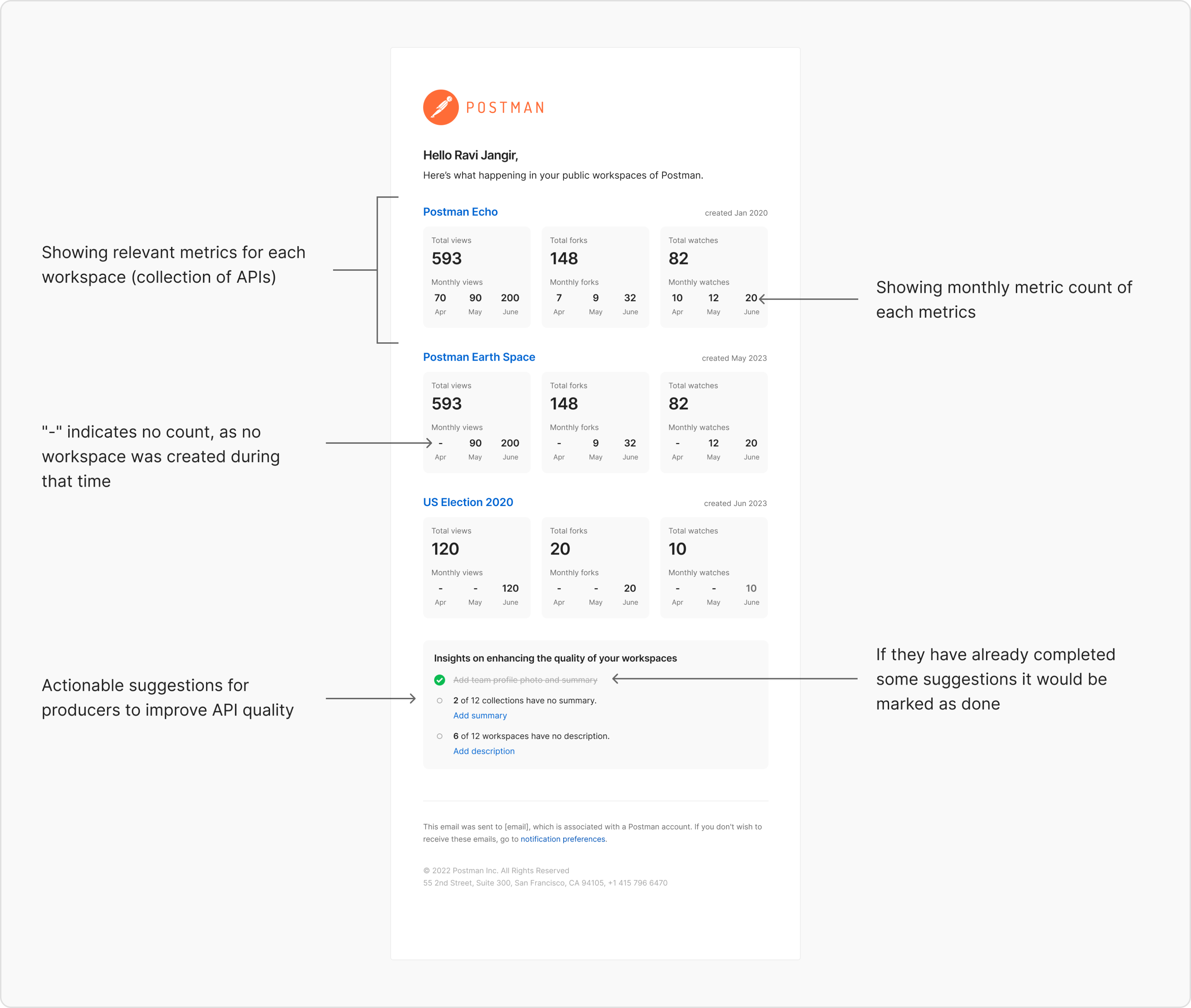
Impact
We received positive feedback from the producers on how these summary emails are beneficial for them to understand and measure their consumer’s interaction with their APIs.


